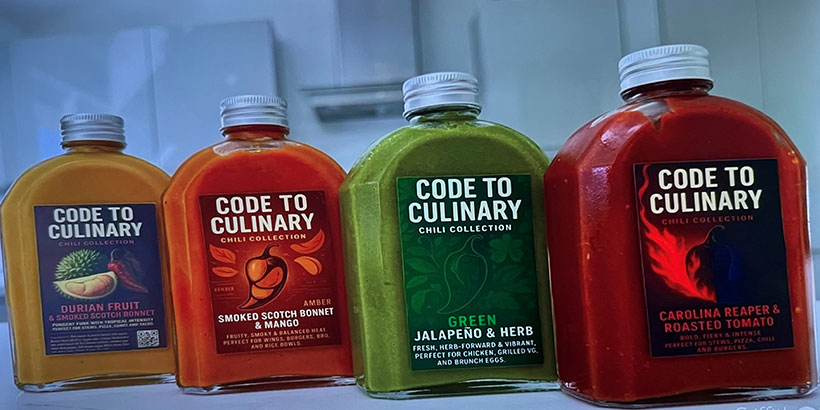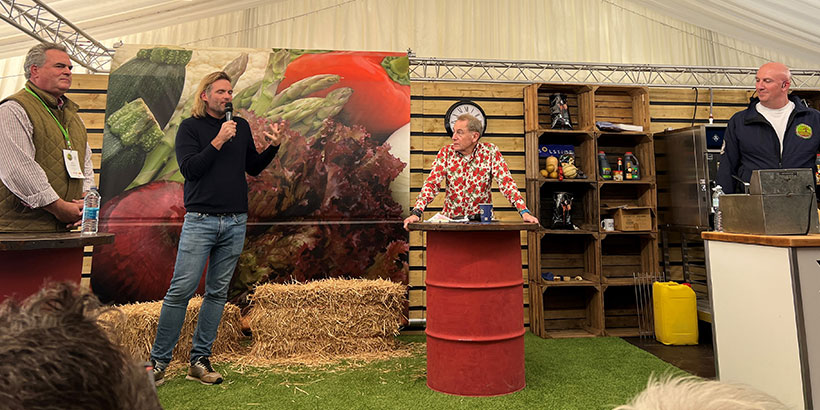AI in Foodservice
Code to Cuisine – AI, Creativity and the Future of Food – UCFF Session
This year’s festival was not just about tasting new flavours and catching up with familiar faces. On the Trends & Debates stage, things got lively as industry leaders explored the role of AI in foodservice. The discussion offered a fascinating look at how technology is shaping menus, kitchens and the guest experience – with a certain amount of spirited debate along the way.
How far can AI go?
The session began with a bold question: if we set aside ethics and infrastructure, how far could AI realistically take us? From farm to fork, the possibilities are seemingly endless. Soil monitoring, crop optimisation, personalised menus, instant ordering and even predicting customer complaints via social media – AI already has the potential to transform every step of the journey. Yet the consensus was clear: taste, creativity and the personal touch remain irreplaceable.
Learning from past experiments
The conversation revisited some early AI projects such as IBM’s Chef Watson. Though flawed at the time and subsequently abandoned, these experiments paved the way for modern tools. They also touched on how QR codes are now commonplace in hospitality (post covid) and Starbucks’ Deep Brew AI, which personalises orders and even predicts demand, demonstrating how early ideas have evolved into industry tools.
Predicting the next big thing
The presenters unveiled a system built to crunch millions of data points from social media, delivery platforms, retail listings and recipe sites. The goal? To spot rising food trends. Unsurprisingly hot sauces came out on top, with the UK leading European consumption – good news for Franks Red Hot Sauce and Cholula! Beyond heat, the system flagged spicy-sweet and fruity-spicy combinations as key growth areas.
From data to dishes
Bringing theory to life, John Feeney demonstrated AI-assisted recipe creation. He showcased an AI originated “traffic light” range of chilli sauces and even a more off-the-wall combination including durian fruit ‘Durian Fruit & Smoked Scotch Bonnet’ (such a chef thing to have in the fridge). AI helped fast-track development, branding and even packaging design (which to be honest, did look it). While not every idea was perfect (often the case with AI), the exercise showed how tech can accelerate innovation and spark fresh inspiration.

Debate from the floor
Of course, not everyone was convinced. Some argued that chefs risk losing intuition if they rely too heavily on algorithms. Others countered that AI is best seen as an assistant – handling repetitive tasks, admin and paperwork – so chefs can focus on creativity. The lively exchange highlighted the balance between craft and convenience, with most agreeing that AI is here to help, not replace.
The bigger picture
As the session drew to a close, the message was clear: AI can suggest, streamline and support, but the true magic of hospitality lies in people. Creativity, passion and personality are what set our industry apart. Used wisely, AI could free up time and energy for chefs and operators to focus on the experiences that matter most. As for the predictions that AI super intelligence will herald the end of humanity (keep it light eh!) – well, some like Mark Morris of TSC are predicting the end of days, but thankfully Simon Stenning whose remit is to predict the future (of foodservice) believes there will be too many guard rails put in place for this to happen – here’s hoping he’s right! Time will tell!
- Spilling the Beans on Coffee Shop Marketing - 6th October 2025
- The LHF Advertising Rules are Coming – Is Your Brand Ready? - 6th October 2025
- Reformulating for Healthy Indulgence: What Consumers Really Want - 2nd October 2025

